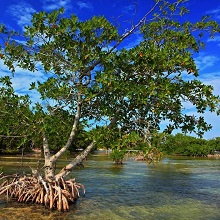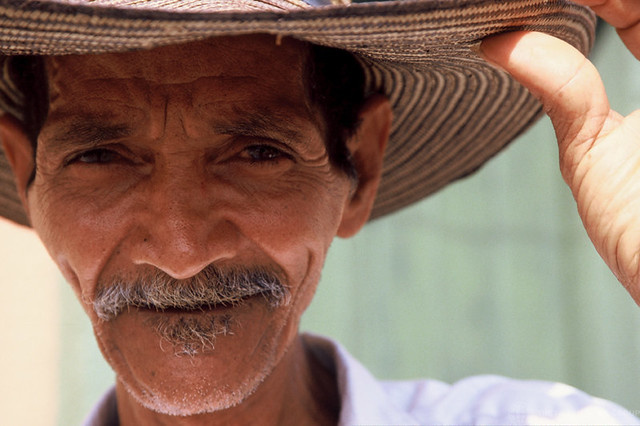Our operations in Belize have strengthened road and energy infrastructure, supported the sustainable management of natural resources, and promoted climate resilience and environmental sustainability. We also responded to socio-economic hardship caused by climate change and COVID-19 through operations in the social protection and in the agriculture sectors.
Climate Resilient Infrastructure Project
· The Climate Resilient Infrastructure Project (P127338) enhanced the resilience of Belize’s road infrastructure against flood risk and impacts of climate change while improving the country’s capacity to respond promptly to emergency and crisis situations. As a result:
o LIDAR remote sensing elevation surveys were captured for 17 percent of Belize and are being used to assess flood risk and integrate climate and disaster risk considerations into infrastructure investments for roads and bridges, including Prince George Highway, Roaring Creek Bridge, Haulover Bridge, and the Coastal Road.
o New climate resiliency standards were introduced for the transport sector, which enhanced design considerations for flooding to 1:25 year recurrence period events as compared to the previous 1:5 year flood return period.
o Institutional capacities to make climate and disaster risk informed decisions were enhanced through the development of 33 localized hazard maps; the establishment of a National Spatial Data Infrastructure for collecting, storing and sharing climate and disaster risk information across government; and the training of 101 individuals, including nine women, in GIS analysis, flood risk analysis and road maintenance.
o Through the activation of the Contingent Emergency Response Component (CERC), the project successfully supported a national response to the COVID‐19 pandemic, providing emergency assistance to over 176,500 vulnerable people (44,785 households) through cash transfers, agricultural inputs, and technical assistance, of which 40.2% were women.
o The CERC also provided agricultural inputs, technical, and financial support to protected farmers from further economic loss and strengthened climate-smart agricultural practices and resiliency of 21,000 households.
Environmental Sustainability
- The Marine Conservation and Climate Adaptation Project (MCCAP) increased protections and restoration efforts to conserve coastal resources, helped to build sustainable and alternative livelihoods for coastal communities to relieve human pressures on the coral reef and to help adaptations to a changing climate, and built public awareness about climate change and the importance of marine resources.
- The Promoting Sustainable Natural Resource-Based Livelihoods project (P132098) successfully increased human resilience to climate change impacts in 25 poor rural communities. By engaging approximately 600 members of beneficiary groups in sustainable livelihood sub-projects and providing training for the development and management of sustainable livelihood activities to 928 people, the project reduced anthropogenic pressure on the natural resource base and benefitted vulnerable households.
Fostering Climate Resilience and Environmental Sustainability
- Developed and adopted methodologies to enhance climate resilience in energy planning.
- The transmission network is being segmented and protected against cascading line faults, and weak transmission sections are being reinforced to improve resilience.
- Protected 405,512 hectares of marine areas for biodiversity, exceeding the target of 386,612 hectares.
- Provided capacity-building support to 5,948 people, exceeding the target of 5,000 people.
Promoting Financial Inclusion & Social Resilience
- The Belize Financial Inclusion and Infrastructure Reimbursable Advisory Service (RAS) supported the development of a comprehensive framework for an inclusive, sustainable financial sector. The RAS supported the Central Bank of Belize’s objective of increasing financial inclusion by assessing the enabling environment, developing a National Financial Inclusion Strategy, and providing technical assistance to enhance the payment and settlement system. The percentage of individuals with an account at a financial institution increased from 48.2% in 2014 to 66% in 2019.
- Provided financial support to farmers severely affected by the pandemic through distribution assistance, agricultural equipment, tools and supplies, protective equipment, and technical support. This support has specifically targeted women involved in agriculture and small farmers.
- Increased the percentage of eligible population fully vaccinated from a baseline of 19% to an ongoing target of 75%.
- Provided emergency cash transfers to 5,543 beneficiaries and improved women's economic inclusion policy formulation.
Infrastructure Development
- The Municipal Development Project reached the targets of 69,177 direct beneficiaries – including 35,280 female beneficiaries, and 88,056 indirect beneficiaries (exceeding the original target).
- The Project financed 33.7 km of drainage, 14.85 km of road rehabilitation, 140 road intersections improvements, and 214 traffic signs. The project further supported nine town councils, building their administrative capacity, and trained 220 staff.
Rural Development & Sustainable Livelihoods
The Belize Promoting Sustainable Natural Resource-based Livelihoods project (P132098) provides good examples of support to vulnerable groups.
- The project supported 25 underprivileged rural communities, including one community primarily composed of the Garinagu people, one composed of the Maya people, and some are a mixture of multiple ethnic groups. The project provided 10 community mobilization workshops for all of these communities, in which 386 people participated. The project also provided 63 training sessions on various subjects from business skills to sub-project specific techniques, in which 915 people participated.
- The project successfully identified 17 natural resource-based livelihoods sub-projects, of which four groups composed of or include Maya people, two groups include Garinagu people, five groups composed exclusively of women, and one group composed of agricultural immigrants. The total number of beneficiaries from these sub-projects were 582 people, of which 268 people (46%) were women, and 112 people were youth.
- The sub-projects were successful in generating revenues, such as the Trio Pineapple Production, which earned revenues of US$33,557, translating to US$1,864/household and a 339% increase in household income from the baseline.
- The Junajil K’anjel San Miguel Pig Rearing Group sold eight pigs and made US$3,278 ($2,086 for meat and $596 for live mass), which translated to US$328/household and a 60% increase in household income.
The San Felipe and Sarteneja Honey producers harvested 50-55 gallons of honey each, with Sarteneja earning US$1,848 for 28 cases, which translated to US$184/household and a 33% increase in household income. The Belize Lionfish Jewelry Group also made sales worth US$3,000 at a special one-day sale and seminar event at the World Bank Headquarters.
Social & Economic Development
To bolster Belize's social and economic landscape, the Productive Inclusion and Female Entrepreneurship Advisory Services and Analytics (ASA) project, P178697 made significant strides in strengthening social protection policies and fostering economic inclusion.
The ASA supported the evaluation and informed the design of the BOOST+ and Women’s Entrepreneurship Program (WEP). It contributed to increasing Government’s capacity to design and implement gender-sensitive social protection policies and programs focused on economic inclusion of women and improved program capacity to assess and match the BOOST+ beneficiaries to in demand skills/job training or entrepreneurship programs that the Government will continue to implement.
BOOST+ Pilot Evaluation:
· Conducted outcome and process evaluations of the BOOST+ pilot program.
· Provided the first assessment of the "wrap-around" service model's impact on families.
· Identified positive outcomes, including increased employment, earnings, and financial inclusion.
· Highlighted areas for improvement, such as referral organization and addressing health and nutrition issues.
Women’s Entrepreneurship Program (WEP) Pilot Technical Note:
· Delivered a technical note on potential design options for the WEP pilot.
· Focused on interventions like assessments, referrals, training in business management skills, and continuous support for business plan development.
· Provided suggested monitoring and evaluation indicators and program targets.
Capacity Building and Informed Decision-Making:
· Generated evidence and roadmaps for better program design and implementation.
· Enhanced the client’s capacity to make informed decisions.


